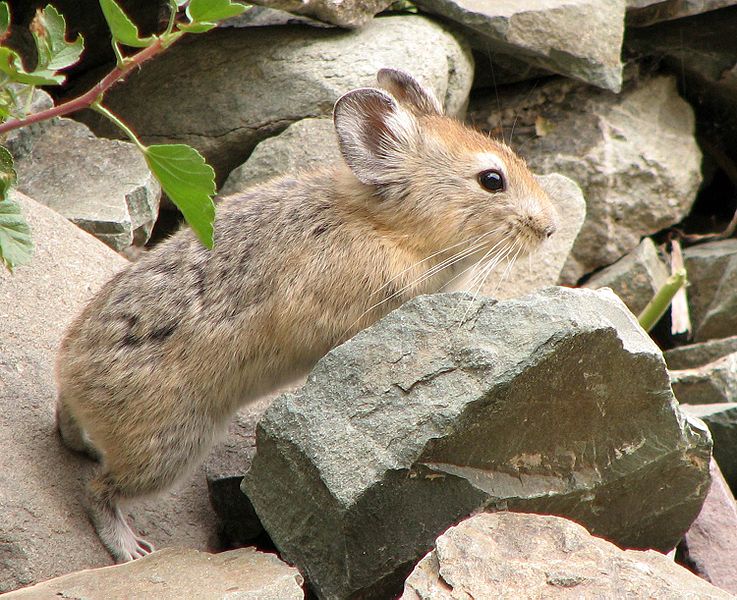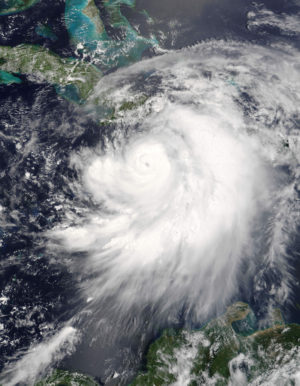Shrinking Range of the Pika
Species can respond to increasing temperatures by moving upslope to higher elevations, however in many locations the mountains are just not high enough to provide a safe refuge.
 Image: By Huangdi (Own work) [Public domain]
Image: By Huangdi (Own work) [Public domain] Pikas are small rodents, related to rabbits. Their high metabolic rate and thick fur – including inside their ears and on the soles of their feet – make them well adapted to the cold temperatures at the high elevations they live in. They do not hibernate in winter, so spend the summer gathering grasses and wild flowers to store in haypiles on which they feed during the cold months.
When summer temperatures are too high, pikas are at risk of overheating so they are forced to stay underground. This means that they spend less time foraging and don’t have as much food to eat in winter. Research in California, recently published in the Journal of Biogeography, has shown that climate change is causing this to happen more frequently, and pikas are disappearing from low elevation sites in the mountains.
The researchers surveyed 67 locations which had historical records of pikas and discovered that the little animals had disappeared from ten of them – 15% of sites surveyed. They also found that pika populations are more likely to go locally extinct at sites with high summer temperatures and low habitat areas.
Lead author Joseph Stewart, a graduate student from the University of California Santa Cruz, says: “Backpackers and hikers often see pikas scurrying back and forth across the rocks, gathering little bouquets of wildflowers in their mouths. They are uniquely adapted to cold temperatures, but these same adaptations make the species vulnerable to global warming. This same pattern of extinctions at sites with high summer temperatures has also been observed in the Great Basin region.”
The researchers then used the data from the sites where pikas have disappeared to develop predictive models to explore the fate of the species in the face of ongoing global warming. They looked at a total of 34 different global climate models which included factors such as different levels of human emissions of greenhouse gases, and varying degrees of human action. The models predict that by 2070, pikas will have disappeared from much of their historic range in California – 39 to 88% of sites.
The severity of the decline will depend on how much summer temperatures rise, and what our response will be. If only modest action is taken, the model predicts that pikas will disappear from around 75% of sites by 2070. With aggressive action to reduce greenhouse gas emissions, the model predicts that 51% of sites will suffer local extinctions. “It looks like we’re going to lose pikas from many areas where people have been used to seeing them. It’s a loss not just for the pikas but also for future generations who won’t get to have that experience,” said Stewart.
It may also be a loss for other species that share their habitat. An important ecological role is played by pikas – as prey to species such as owls and stoats, and because they alter vegetation and soil composition through their foraging activities. Other high elevation species, Belding’s ground squirrel and whitebark pine, for example, could also lose part of their range.
Species can respond to increasing temperatures by moving upslope to higher elevations, however in many locations the mountains are just not high enough to provide a safe refuge. Even if we respond to climate change more than we are doing so now, it is likely that we will still see local extinctions of many of California’s most familiar species.





One Comment
Poor pikas, i wish i could do more :/